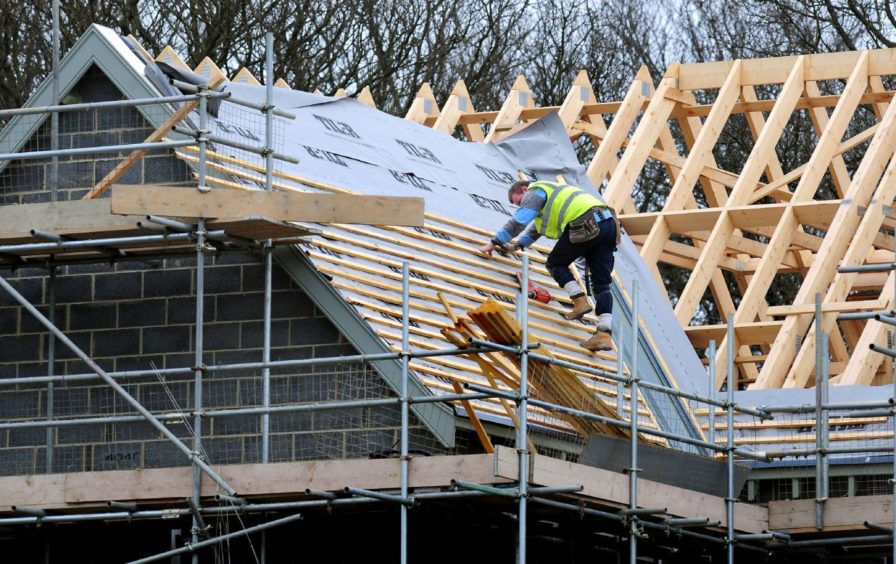There is a very big bill coming down the line. The question is, who should pay for it? And the problem is homes leaking greenhouse gases.
“Roughly 20% of […] energy-related greenhouse gas (GHG) emissions stem from heating, cooling, and powering households.
“If considered a country, these emissions would be considered the world’s sixth largest GHG emitter, comparable to Brazil and larger than Germany.”
So says the National Academy of Sciences of the USA.
The numbers are less in the UK because we don’t use so much air cooling, but it still accounts for a vast chunk of our total emissions, according to the independent Climate Change Committee.
The UK Government is briefing it may raise taxes on long haul flights to dissuade people from burning aviation fuel. You would have to do the London to Singapore return on a permanent loop to get close to the amount of carbon leaking from your house.
The trouble is that proper insulation on old buildings is very expensive.
A report out this week reckoned the average tenement flat would need £40,000 worth of upgrades. Even if gas prices leapt up, you would need the boiler on full blast for decades to spend as much as £40,000.
Who pays to cut greenhouse gas?
The cost benefit ratio on insulating homes doesn’t currently make sense. And that’s why the bill will probably have to be met with tax incentives and grants.
However, local councils have already had their budgets slashed by Edinburgh, which in turn is complaining about lack of funds, so it’s not clear who picks up that cost.
There are two and half million flats and houses in Scotland. The cost of fixing the problem is in the tens of billions.
With COP26 coming to Glasgow, politicians are keen to surf the green wave. Boris Johnson wants a Green Industrial Revolution, promoting hydrogen. Prince Charles was seen driving a hydrogen powered car this week.
As to the cost of converting the old gas distribution network and all those home boilers to hydrogen – astronomic. Yet that’s what traditional power companies lobby for.
The UK Government recently spoke up the virtues of air source and thermal heat pumps: much better for the environment as they produce much less greenhouse gas emissions.
Boris Johnson said he wanted 600,000 homes fitted with pumps – a fraction of England’s housing stock.
The PM’s green revolution is the right general idea, and focuses on the right things, but it’s probably not enough. The politicians are behind the scientists and officials.
Share the heat, share the bill
The Scottish Parliament passed the Heat Networks (Scotland) Bill in the last session. It sounds exceptionally dull so has been given no coverage, which is a pity, as it addresses an important idea.
Some social housing in central Europe in the 20th century used a single heat source – a coal fired boiler – to heat a multitude of apartments. The cost was split equally among the tenants or the state.
The heat in buildings strategy makes for comforting reading. Unfortunately, it’s not clear if Scottish ministers have read it
The heat networks bill suggests we do the same, but with heat pumps or communal solar panels instead of coal. It’s a nice idea, and is undoubtedly the future for housing developments, but it could prove very expensive to retrofit.
The one ray of hope comes from new builds, which require no awkward retrofitting, no inconvenient connections.
That is one of many conclusions in the heat in buildings strategy from Scottish Government officials, published in February. It makes for comforting reading. Unfortunately, it’s not clear if Scottish ministers have read it.
Sums don’t add up to action
Since 2016, more than 40,000 new homes have been completed in Scotland with public funds. Of these, roughly 85% have been connected to the gas mains. Only around 13% have non-gas fuel sources.
I should say my maths is not great and the Scottish Government gave me percentages of percentages in response to a question about how many homes were connected to heat pumps.
As all homes have an Energy Performance Certificate, officials must have the hard numbers, but didn’t offer them up.
Roughly, it would seem that of all the completed new builds, at best the number future-proofed with heat pumps, is around 2,000 to 3,000. The number connected to heat networks is much less – a few hundred.
Which suggests that the vast majority of new homes were connected to gas even after ministers announced a ban on gas boilers in new builds from 2026 onwards.
It also suggests that new environmental standards are shifting a huge burden on home owners, while the state isn’t honouring the spirit of the policy in its own builds.
I asked the government how many of the 100,000 houses the SNP pledged to build at the election would be served by heat pumps. I was told it is an “aspiration”. Decoded, I think that means they can afford the target if it’s really green.
There is a massive, unavoidable bill for private citizens or taxpayers coming due
No one thinks this issue is easy, or cheap. But nor is it fudgeable.
Cutting domestic emissions is a non negotiable in the race to stop the planet heating beyond human tolerance.
There is a yawning chasm between the advice given to the Scottish Government and its actions.
Furthermore, there is a massive, unavoidable bill for private citizens or taxpayers coming due. The questions remain: who pays, and how?


